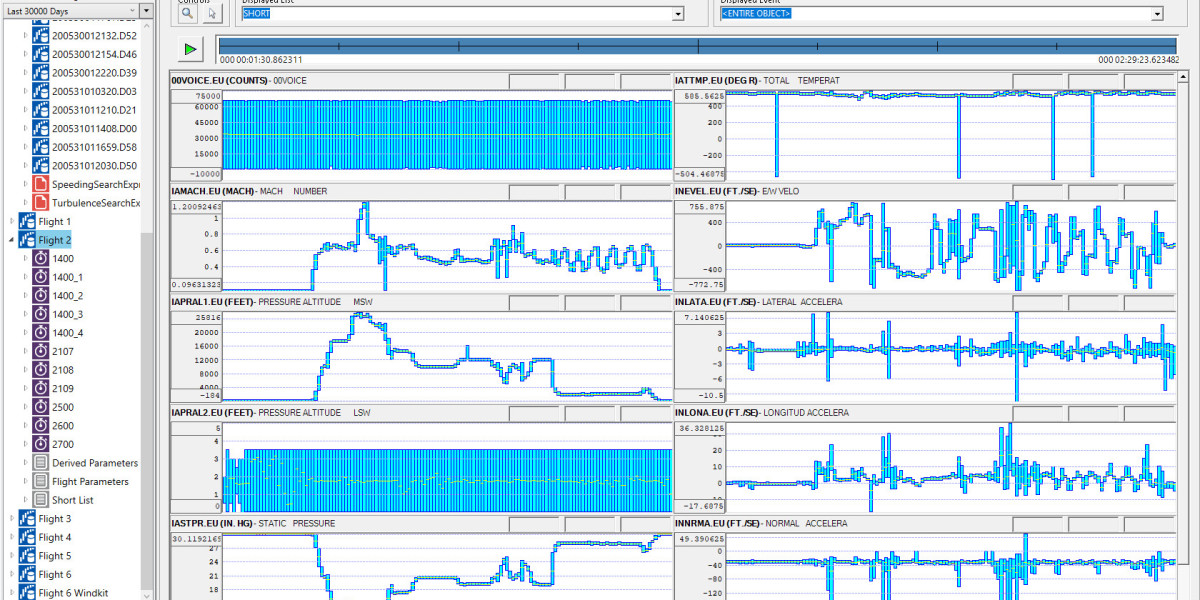Flight test data plays a pivotal role in the aviation industry, providing crucial insights into the performance, structural integrity, and environmental impact of aircraft. From the early stages of aircraft design to ongoing operational improvements, flight test data informs decision-making processes, driving innovation and ensuring safety. In this article, we delve into the world of flight test data, exploring its types, collection methods, analysis techniques, applications, challenges, and future trends.
Introduction to Flight Test Data
Flight test data encompasses a wide range of information gathered during the testing and evaluation of aircraft. It includes data related to performance metrics, such as speed, altitude, and fuel consumption, as well as structural parameters like stress, strain, and vibration. Additionally, environmental data, such as temperature, humidity, and air quality, are also collected to assess the aircraft's behavior in different operating conditions.
Types of Flight Test Data
Performance Data
Performance data provides insights into how an aircraft performs under various flight conditions. This includes parameters such as takeoff and landing distances, climb rates, cruise speeds, and fuel efficiency.
Structural Data
Structural data focuses on the behavior of the aircraft's components and structures under different loads and environmental conditions. It includes measurements of stress, strain, deformation, and vibration.
Environmental Data
Environmental data helps assess the impact of external factors on aircraft operations. This includes meteorological parameters, such as wind speed, temperature, and atmospheric pressure, as well as air quality and noise levels.
Collection Methods
Flight test data is collected through a variety of methods, utilizing onboard sensors, ground-based monitoring systems, and remote sensing technologies.
Onboard Sensors
Modern aircraft are equipped with a plethora of sensors that continuously monitor various parameters during flight. These sensors measure everything from airspeed and altitude to engine performance and wing loadings.
Ground-Based Monitoring Systems
Ground-based monitoring systems, such as telemetry stations and radar installations, track aircraft movements and gather real-time data during flight tests. These systems provide additional support for data collection and analysis.
Remote Sensing Technologies
Remote sensing technologies, including satellite imagery and unmanned aerial vehicles (UAVs), offer valuable insights into environmental conditions and aircraft behavior from a distance. These technologies supplement onboard and ground-based data collection efforts.
Analysis Techniques
Flight test data analysis employs a range of techniques to extract meaningful insights and validate design assumptions.
Statistical Analysis
Statistical analysis techniques, such as regression analysis and hypothesis testing, are used to identify patterns, trends, and correlations within the data.
Computational Fluid Dynamics (CFD)
CFD simulations are employed to model airflow around the aircraft and predict aerodynamic performance. These simulations help optimize aircraft design for improved efficiency and stability.
Finite Element Analysis (FEA)
FEA is used to simulate the structural behavior of aircraft components under different loading conditions. It helps engineers assess structural integrity and identify areas for optimization.
Applications in Aircraft Design
Flight test data informs various aspects of aircraft design, from aerodynamic optimization to structural integrity assessment and environmental impact analysis.
Aerodynamic Optimization
By analyzing performance data and conducting CFD simulations, engineers can refine the aerodynamic shape of aircraft to minimize drag and maximize fuel efficiency.
Structural Integrity Assessment
Structural data collected during flight tests is used to assess the strength and durability of aircraft structures, ensuring they can withstand the rigors of flight operations.
Environmental Impact Analysis
Environmental data helps evaluate the aircraft's impact on the environment, including emissions, noise pollution, and fuel consumption. This information guides efforts to develop more eco-friendly aircraft designs.
Challenges in Flight Test Data Analysis
Despite its importance, flight test data analysis presents several challenges, including data volume and complexity, calibration and validation issues, and safety considerations.
Data Volume and Complexity
Flight test data sets are often large and complex, comprising thousands of data points collected from numerous sensors. Analyzing such vast amounts of data requires sophisticated algorithms and computational resources.
Calibration and Validation Issues
Ensuring the accuracy and reliability of flight test data requires meticulous calibration and validation procedures. Any discrepancies or errors in the data can lead to inaccurate conclusions and potentially compromise safety.
Safety Considerations
Flight test operations carry inherent risks, and safety is paramount at all stages of the testing process. Engineers must carefully plan and execute tests to minimize the likelihood of accidents or incidents.
Future Trends
The future of flight test data analysis lies in harnessing the power of big data analytics, artificial intelligence (AI), and machine learning (ML) technologies.
Big Data Analytics
Advances in big data analytics enable faster processing of large data sets and extraction of actionable insights. By leveraging big data techniques, engineers can uncover hidden patterns and optimize aircraft performance more effectively.
Artificial Intelligence and Machine Learning
AI and ML algorithms can automate data analysis tasks and identify complex relationships within the data. These technologies enhance predictive capabilities and support data-driven decision-making in aircraft design and operation.
Integration with Digital Twin Technology
Digital twin technology creates virtual replicas of physical assets, such as aircraft, allowing for real-time monitoring and simulation. By integrating flight test data with digital twin models, engineers can simulate various scenarios and optimize aircraft performance in a virtual environment.
Case Studies
Several notable aircraft programs have relied on flight test data to achieve success, including the Boeing 787 Dreamliner, Airbus A350 XWB, and NASA's X-59 QueSST.
Regulatory Framework
Regulatory agencies, such as the Federal Aviation Administration (FAA) and the European Union Aviation Safety Agency (EASA), establish guidelines and standards for flight test operations and data analysis.
Benefits for Airlines and Manufacturers
Leveraging flight test data offers numerous benefits for airlines and aircraft manufacturers, including improved efficiency, enhanced safety, and cost savings.
Conclusion
Flight test data is a valuable resource that drives innovation and ensures safety in the aviation industry. By collecting, analyzing, and leveraging data insights, engineers can design better aircraft and improve operational performance. As technology continues to advance, the role of flight test data will only become more critical in shaping the future of aviation.







